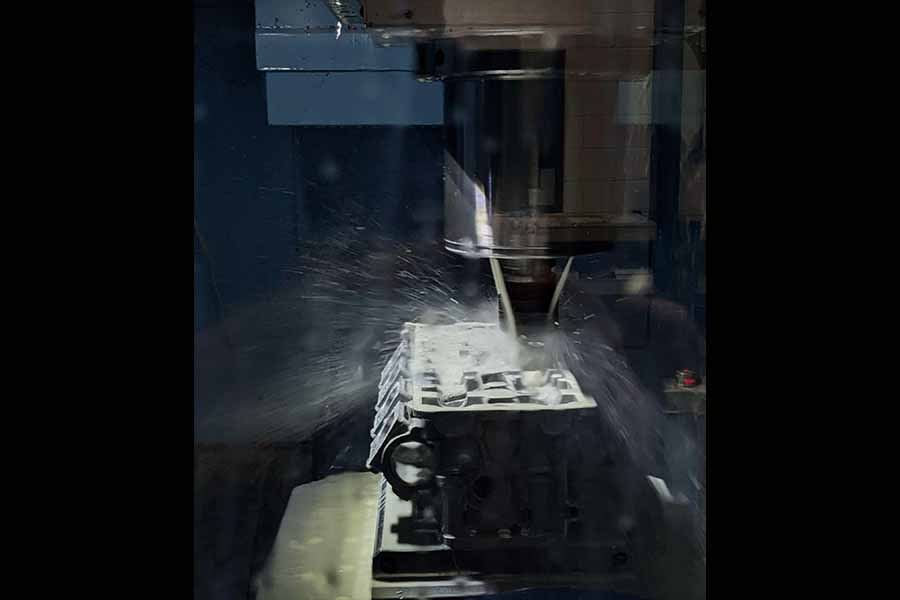How to Pick the Appropriate Cutting Technique for Your Task
In the dynamic world of industrial cutting and fabrication, selecting the right machining method for the project can significantly influence the standard, effectiveness, and cost efficiency of your final product. As companies work to optimize their processes and stay competitive, understanding the various cutting techniques available is essential. Two popular options that have gained traction in the last years are laser and waterjet cutting service s. Both method brings its own distinct advantages and is tailored for different materials and applications.
Selecting the appropriate cutting method requires thorough consideration of factors such as material type, thickness, tolerance standards, and production volume. By acquiring insight into the features of laser and waterjet cutting, manufacturers can make educated decisions that will enhance their operational capabilities. In this document, we will discuss the key distinctions and benefits of these cutting methods, helping you to navigate the options available and effectively meet your project requirements.
Understanding Slicing Methods
When initiating an commercial slicing task, it is vital to grasp the various trimming techniques at your disposal. Each method has unique characteristics that may be preferably suited for specific substances and purposes. The choice of cutting technique will significantly impact the effectiveness, caliber, and affordability of the final product. Two popular cutting methods in the industry are LASER and hydrojet cutting solutions, both offering unique advantages and applications.
Laser cutting uses directed beams of light to accurately slice through materials. This method is well-known for its precision and ability to create complex designs. It is often used on substances such as ferrous materials, synthetics, and wood. Light-based technology allows for little heat impact, diminishing warping and ensuring cleaner edges. Additionally, the quick functioning of light-based cutting makes it an ideal choice for projects requiring swift production times without neglecting quality.
On the other hand, water-jet cutting uses a high-pressure stream of water, commonly mixed with cutting agents, to cut through multiple materials. This method is particularly favorable for denser materials and can slice through ferrous materials, crystal, rock, and mixed materials. Hydrojet cutting is appreciated for its potential to work without introducing heat, thereby maintaining the material's quality. Furthermore, it produces no hazardous fumes, making it a less risky option in various industrial contexts. Understanding these variations is important for deciding on the cutting technique that corresponds with your project's particular requirements.
Advantages of Laser Cutting
Laser cutting offers outstanding precision, making it perfect for complex designs and intricate shapes. The directed beam of light enables for clean cuts with minimal kerf, ensuring that the material removed is restricted. This level of accuracy not only improves the total quality of the item but also decreases the need for secondary finishing processes, saving time and resources in production.
Another significant advantage of laser cutting is its flexibility. It can be used on a diverse selection of materials, including metals, polymer, wood, and ceramics. This versatility means that companies can adapt to various project requirements without the necessity of invest in different cutting technologies. In addition, laser cutting systems can easily transition between materials, allowing for fast changes in production runs while upholding high efficiency.
Economic benefits is also a crucial benefit of laser cutting. Although the upfront investment for laser cutting machines might be higher compared to traditional cutting methods, the long-term savings are significant. With lessened material wastage and decreased labor costs due to the automated nature of the process, companies can see a notable return on investment. Additionally, the rapidity of laser cutting can lead to reduced lead times, which is vital in competitive manufacturing environments.
Benefits of Waterjet Cutting
Water jet cutting offers a significant level of exactness, making it an ideal choice for applications that demand detailed designs and narrow tolerances. The method utilizes a high-pressurized stream of water, often mixed with granular materials, which can easily cut through a diversity of media, including metals, synthetics, and ceramics. This capability allows for smooth edges and little material wastage, which is essential in manufacturing cutting and production.

Another key advantage of waterjet cutting is its adaptability. It can handle a wide range of workpieces and thicknesses without switching tools or setups. This flexibility makes it suitable for different applications, from sample creation to large-scale production runs. Additionally, because the technique does not generate heat, it lowers the chance of distorting or altering the physical properties of heat-sensitive materials.
Waterjet cutting is also an environmentally friendly option as it uses liquid as its principal cutting agent, and produces little hazardous waste. The nonexistence of dangerous emissions means it can be used in sectors that prioritize eco-consciousness. In manufacturing settings where adherence with eco-laws is crucial, water jet cutting stands out as a feasible and accountable choice.